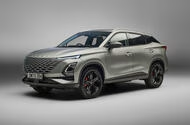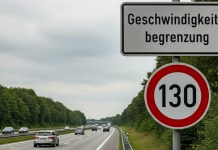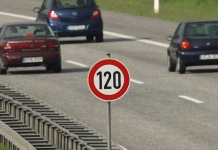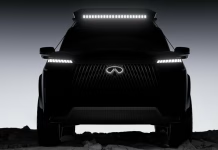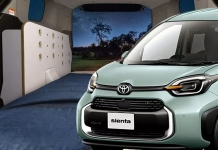IndyCar Community Outraged as Feds Use Racecar to Promote New Detention Center
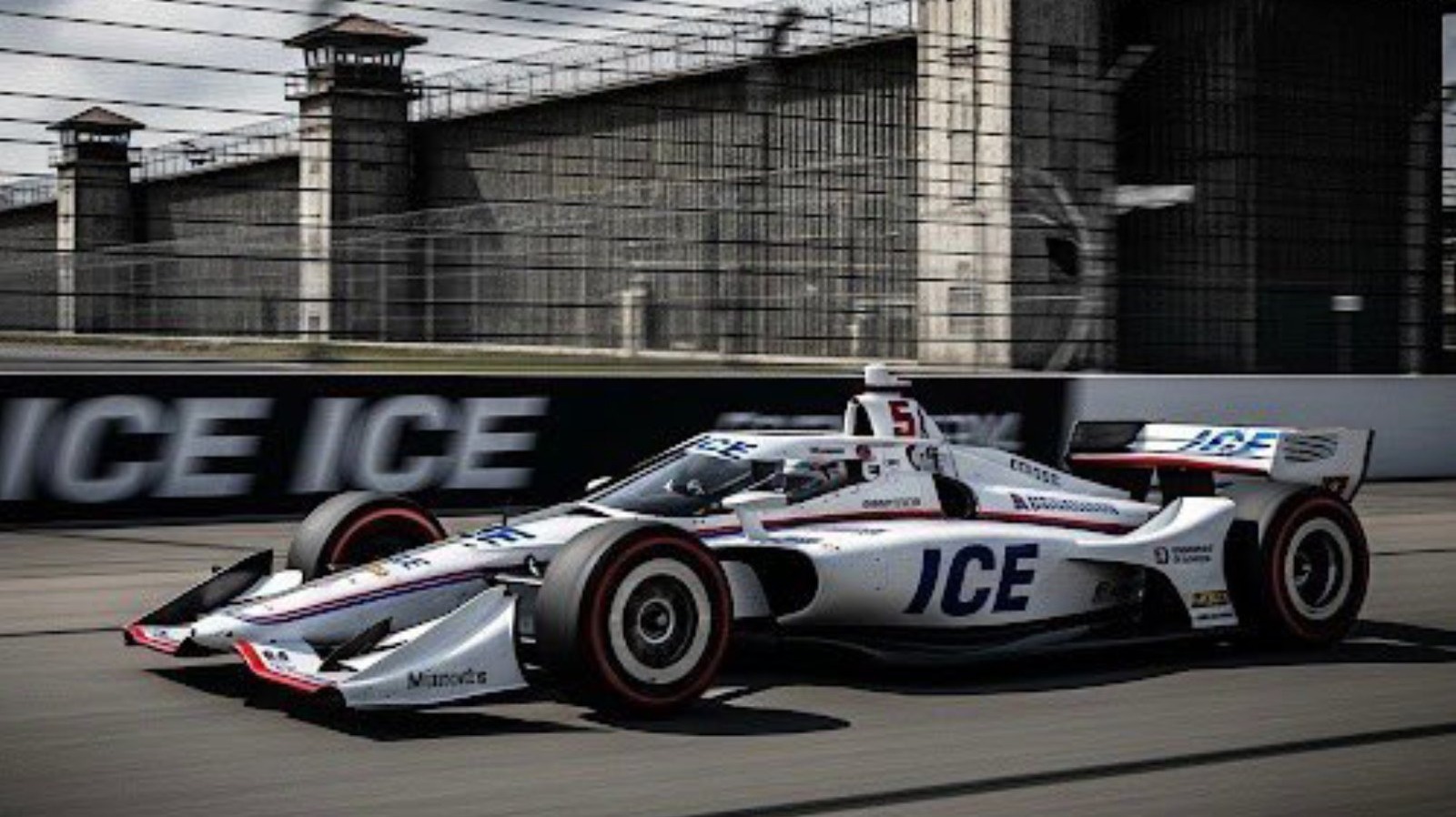
Tokyo Wedding Taxis Redefine Tradition With Custom Hybrid Charm
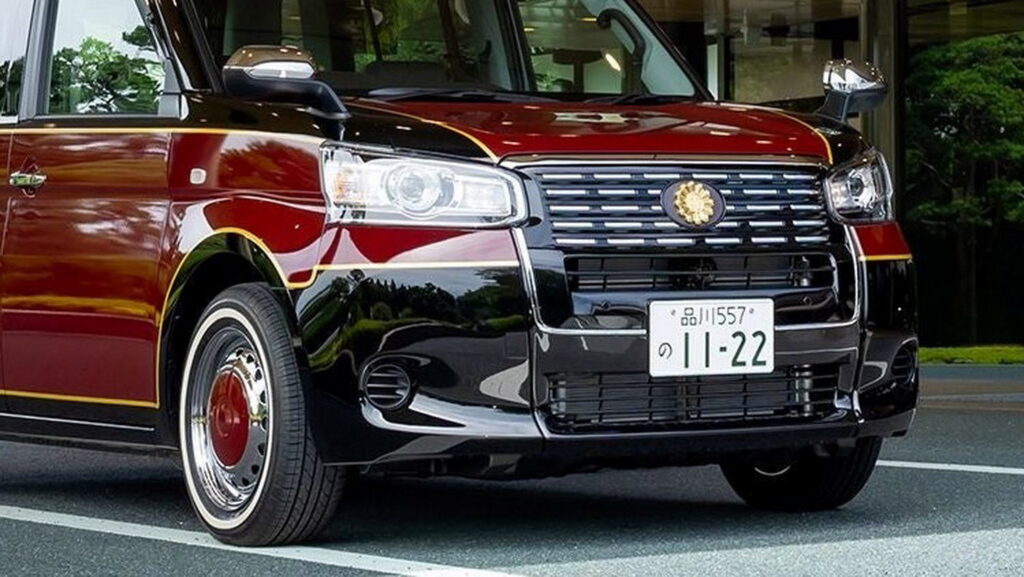
Omoda 5 and E5 SUVs Get Rapid Upgrades After Criticism Boosting Comfort Handling and...
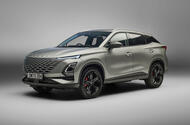 Updates have been made to improve interior quality, practicality and ride refinement
Updates have been made to improve interior quality, practicality and ride refinement
Omoda has announced what could be the fastest update to a car yet, confirming that refreshed versions of its 5 and E5 SUVs have been launched following critical media reviews.
The changes come less than a year after the two models arrived in the UK as part of the brand's market launch here. The updates include technical improvements, higher perceived material quality and revisions to the cars' handling and overall driving refinement.
For both cars, Chery-owned Omoda has upgraded the front suspension and revised the steering geometry to “provide a more dynamic proposition to drivers”.
This follows Autocar’s road test of the 5, which noted a “poor ride and handling balance” with body control that has “a fundamental lack of cohesiveness” and is “so ill-matched to the steering’s rate of response it makes for a tiring driving experience”.
Meanwhile, new front wheel hubs and bearings have been added and brake linings have been refreshed. This follows criticism of the cars' “vicious pitch and shimmying under hard braking”.
Inside, both models now sport the same interior to bring more parity to the range and give the combustion car better cabin quality with softer materials. Omoda previously told Autocar the EV’s cabin was “half a generation” ahead of the 5 and our test noted that the E5 felt “quite a bit more plush”.
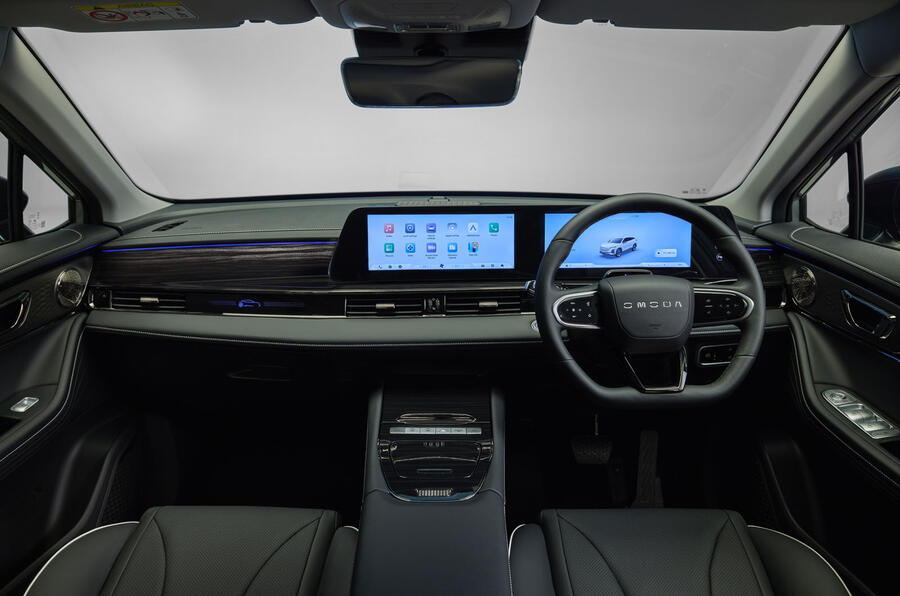
The brand has also added larger, 12.25in screens, which have been angled towards the driver for better visibility when driving.
In addition, there is a revised steering wheel design and new seats, with more adjustment, across the range. The gear selector and wireless charging pad have been repositioned to make them easier to access on the move.
At the car's rear, Omoda has removed the full-size spare tyre in a bid to boost boot space from 372 litres to 430 litres. Previously, our road test noted the boot size was “poor”. The increase moves it closer to the 504 litres offered by its Nissan Qashqai rival.
Under the skin, the 5’s 1.6-litre petrol engine has been detuned from 187bhp to 145bhp, which, the brand says, is in an effort to reduce its emissions output and therefore its tax bracket.
Meanwhile, the E5’s 61kWh CATL-sourced battery pack has been improved to offer 267 miles of range, up 12 miles. Its charging rates have also been increased to 130kW via a DC and 10.3kW via AC. The top Noble trim also gets a heat pump.
Pricing for the 5 range starts at £23,990 for the base-level Knight trim and rises to £27,490 for a Noble-spec 5. The E5 is priced from £33,065 and tops out at £34,565.
Porsche Driver Faces Heavy Penalties After 199 MPH Speeding Bust on German Autobahn
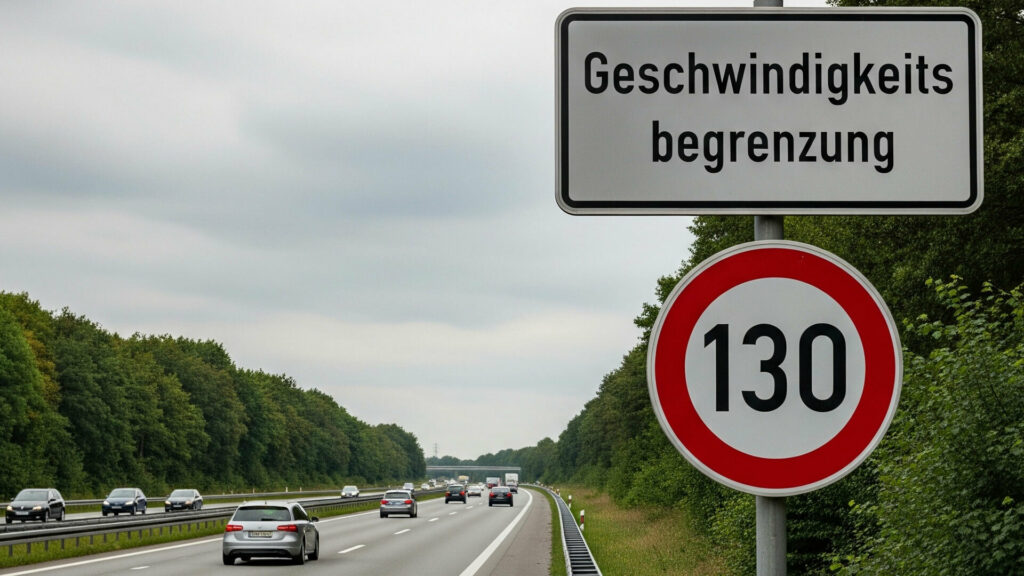
Driver Caught at 199 MPH Sets New Speeding Record on Highway
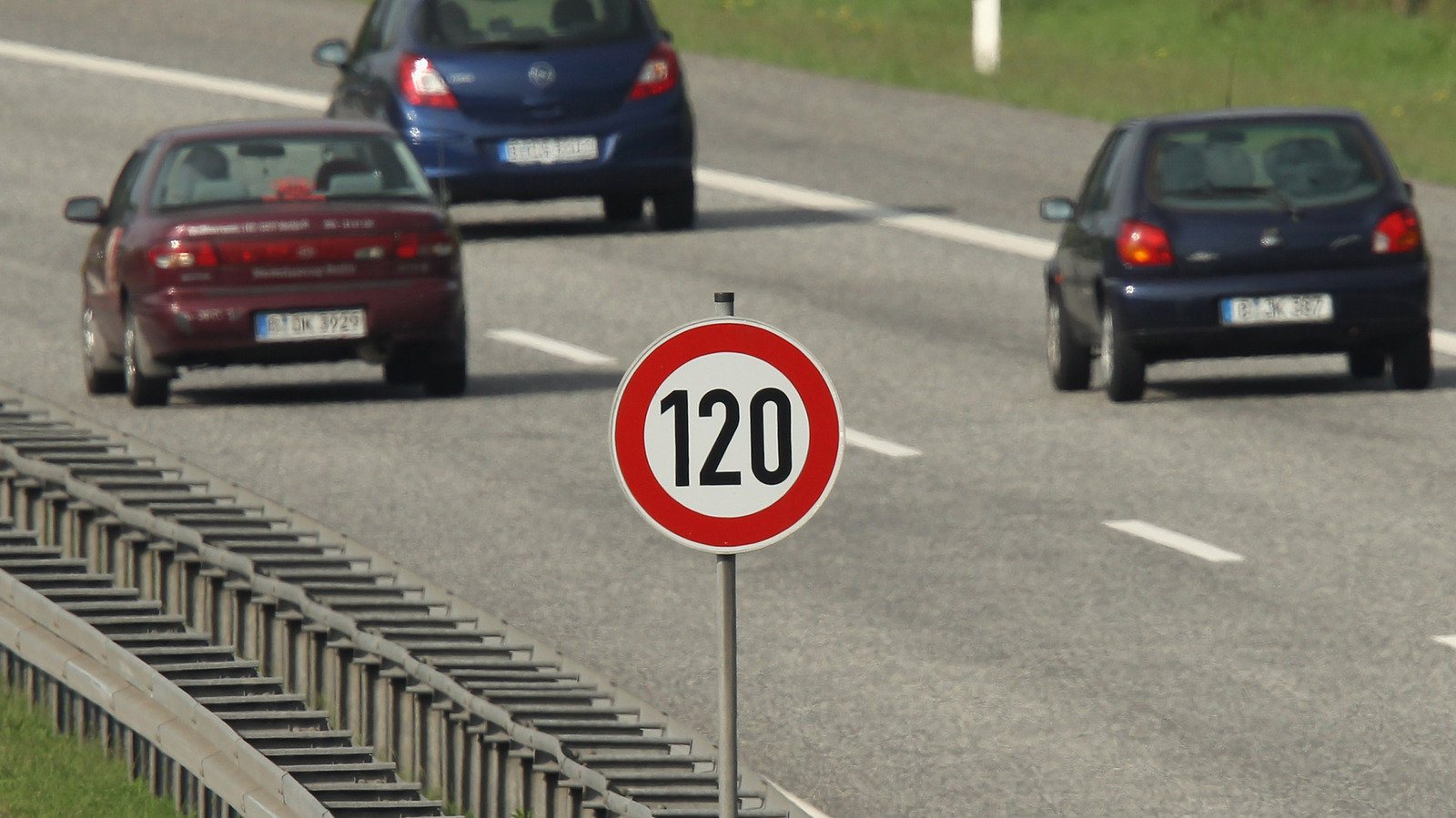
Infiniti Unveils Bold New Concepts: Off-Road QX80, Track-Ready SUV, and Sleek QX65 Coupe
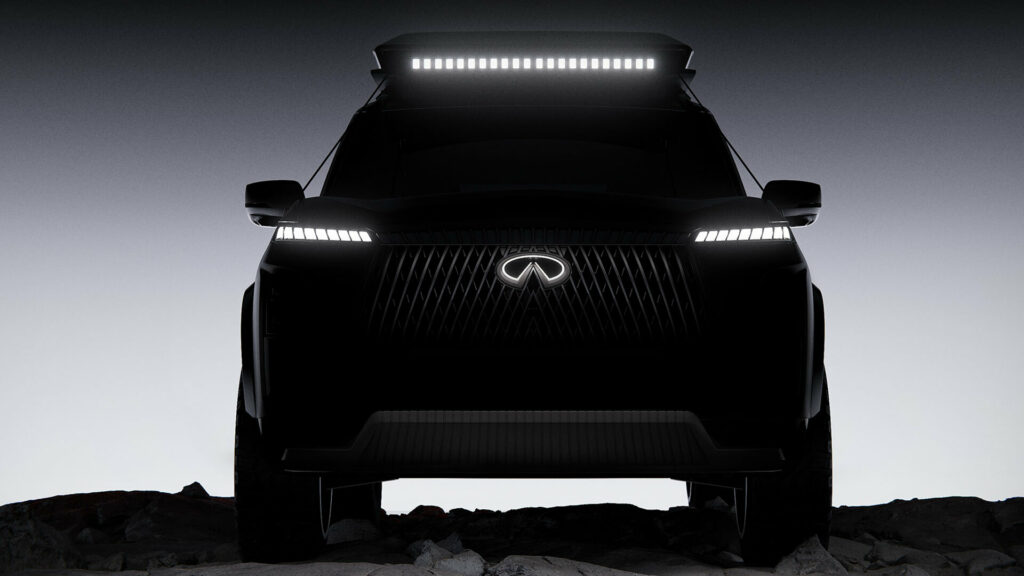
Why the Lexus LFA Remains a Priceless Icon Even With High Mileage
Next Generation Mercedes GLC EV Unveiled Bold Design Long Range and Cutting Edge Tech...
 Successor to EQC will go toe-to-toe with forthcoming BMW iX3 in Europe's most hotly contested segment
Successor to EQC will go toe-to-toe with forthcoming BMW iX3 in Europe's most hotly contested segment
Mercedes-Benz will launch a radical new GLC next year, an important new model for the German firm as it looks to gain a foothold in Europe’s most hotly contested new car segment.
Launching at the same time as the new BMW iX3, its key segment rival, the electric GLC not only marks Mercedes' next step in electrification but also will be the first car to embody the brand’s bold new-era design language – something that will be adopted across the rest of the range in the coming years.
It will be sold alongside the current, second-generation combustion-engined GLC, which was launched in 2022. That car has regularly been Mercedes’ best-selling model since its introduction in 2015 and the firm hopes the new GLC EV – successor to the discontinued EQC SUV – can leverage the equity built by the GLC name and be a catalyst for Mercedes’ EV sales.
Going on sale in early 2026, the electric GLC – which we've already driven in prototype form – will become the first model to use the Mercedes-Benz Electric Architecture (MB.EA), which will also form the basis of the upcoming electric C-Class, due at the end of 2026 or start of 2027.
It supports an 800V electrical architecture and has an expected maximum charging speed beyond the 320kW of the new MMA-based CLA EQ – the longest-range and most efficient EV currently on sale.
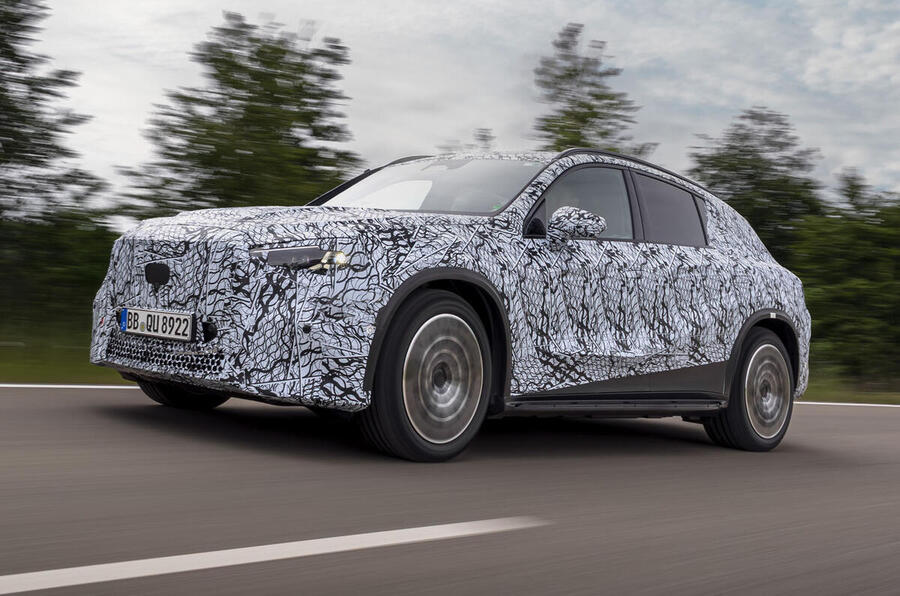
Mercedes officials have confirmed to Autocar that the electric GLC will draw electricity from a 94.5kWh battery, which will provide up to 435 miles of range in its most efficient form.
While that is a significant amount of range for an SUV, matching today's class-leading Peugeot e-3008, it will be beaten by the new iX3, which is promised to offer 497 miles.
The electric GLC will be sold with single- and dual-motor powertrains, offering up to 482bhp in dual-motor guise.
An AMG performance flagship is due in 2027 and is tipped to offer up to 600bhp.
In styling terms, the GLC will introduce Mercedes' new look. A key aspect of this is the new nose. Official pictures from the German firm show a reinvented grille design that fuses classic styling with bold lighting elements.
This includes a chrome front perforated with 942 small holes. Behind the panel are more than 100 LEDs, which enable the grille to light up in a variety of customisable ways.
The central star logo is also illuminated, although the extent to which it is will be dependent on local regulations.
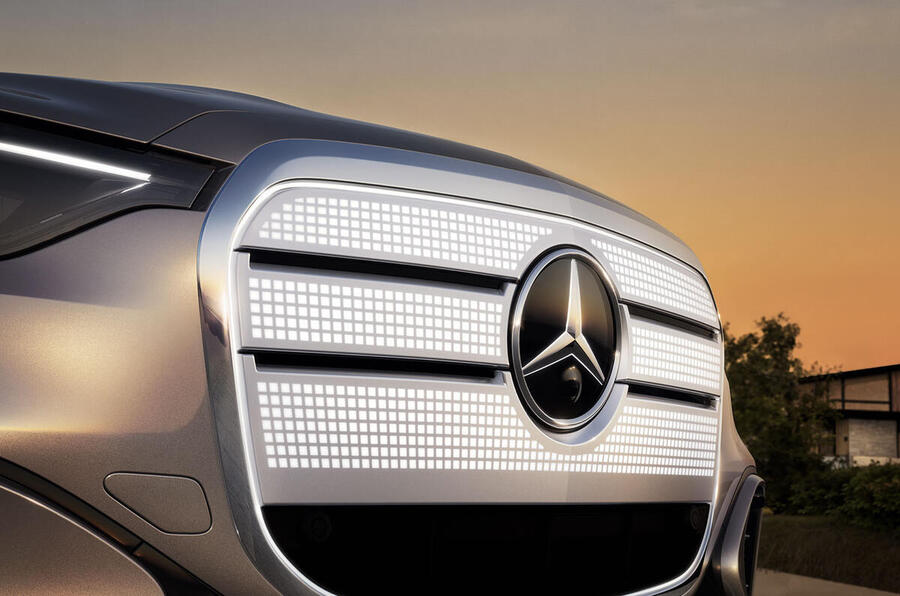
Mercedes boss Ola Källenius said the new design would ensure Mercedes could maintain its identity through its EVs “in current times, with 100-plus Chinese firms” and others entering the market; and ensure it could carry “the calling card of Mercedes, the unmistakable Mercedesness” into the future when new ICE cars finally go off sale from 2035.
Like the smaller CLA, the GLC’s overall design is of a progressive look. It draws heavily on Mercedes’ Vision EQXX concept car in terms of aerodynamic performance and minimising the loads on the motors to maximise efficiency.
For reference, the streamlined EQXX extracted 627 miles from a 100kWh battery pack last year.
As a result, this approach will yield a futuristic-looking design, with a rakish bubble-like roofline.
According to Mercedes design chief Gorden Wagener, the ambition is to give the new model “a strong identity” in the “sea of sameness” that he perceives among today’s EVs.
Much of the GLC’s cockpit design remains under wraps, but the new CLA hints at what to expect. That car’s dashboard is designed around the latest iteration of Mercedes’ Superscreen, which spans the width of the dashboard with three digital displays – a 10.25in screen for driving information, a 14.6in infotainment screen in the middle and a 14in screen for the front passenger.
Like its iX3 rival, the GLC will dispense with many physical buttons and instead use voice controls backed by artificial intelligence systems.
Toyota Sienta Juno Reinvents the Minivan as a Customizable Camper for Everyday Adventures
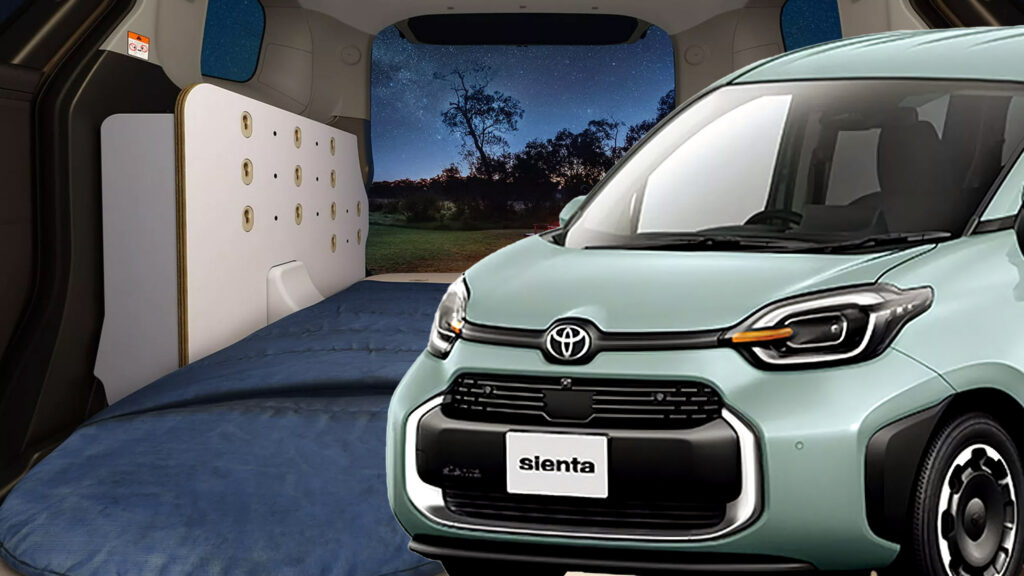
Motorcyclist’s First Crash Highlights the Life-Saving Power of Proper Gear




